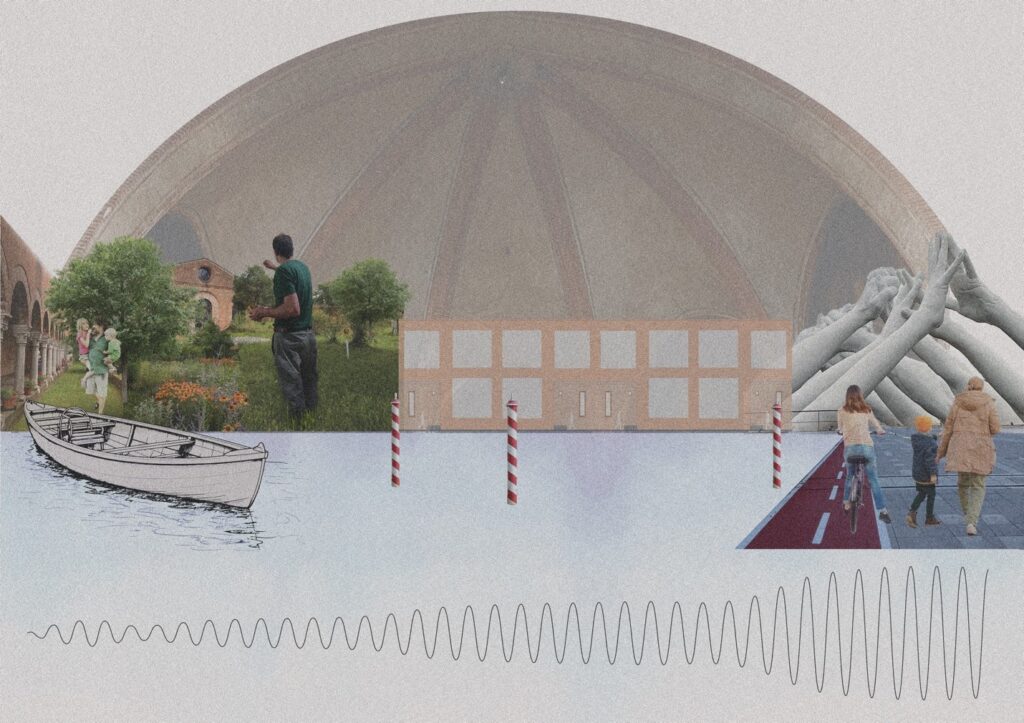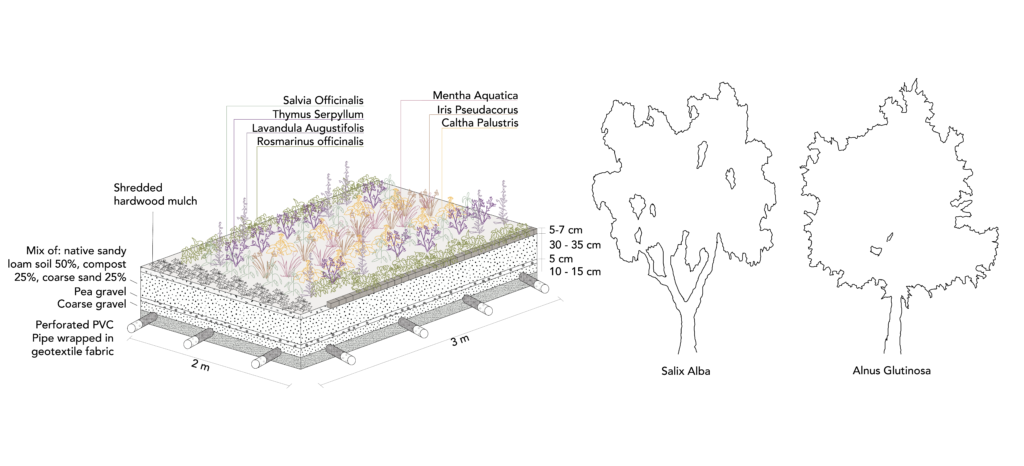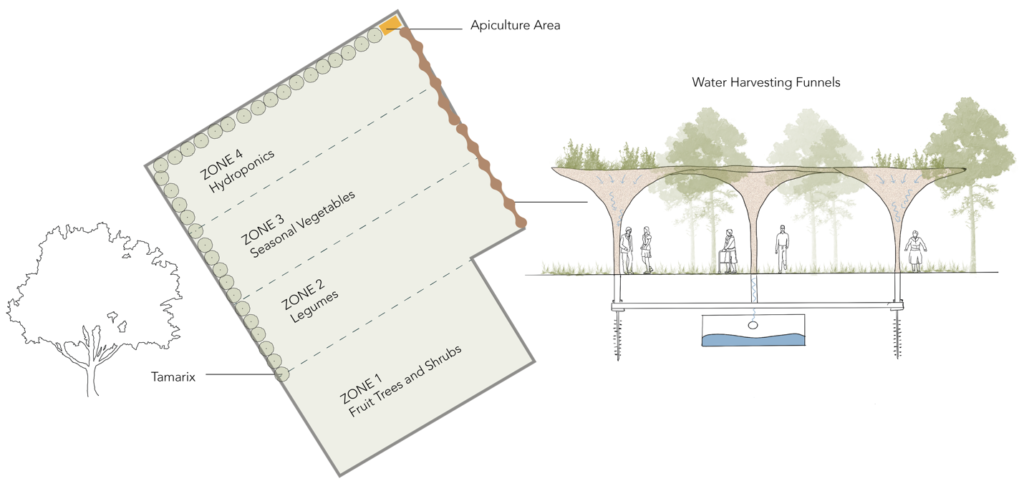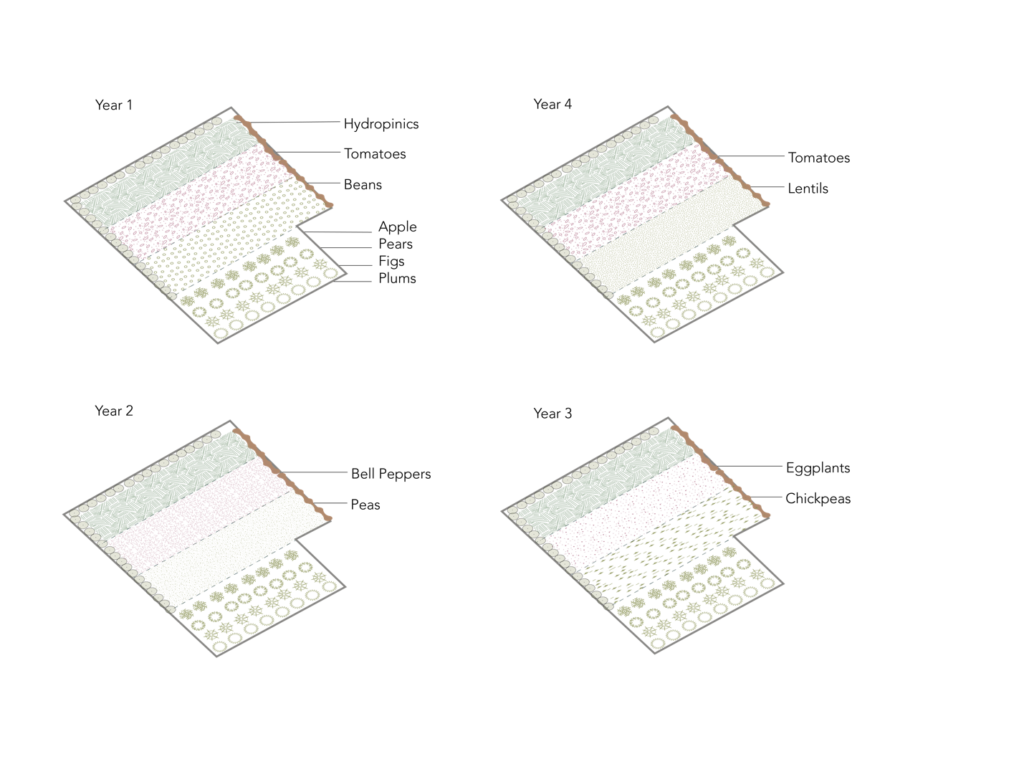Roxana Sala
Landscape Architecture MSc., Politecnico di Milano and Sustainable Healthy Cities: Building for the Future Summer School student
Email: [email protected]
In June 2024, I participated in a two-week workshop on Sustainable, Healthy Cities organised by GCHU, The King’s Foundation, and The European Cultural Academy. Participants were asked to develop a proposal for the site of Tronchetto, aided by the ideas from the lectures and site visits we had throughout the course. The various lectures helped us understand the history of Venice and its current context, global issues about climate change and how we can create resilient environments.
Tronchetto is an industrial-looking island used as the parking hub for the tourists and locals coming in and out of Venice. On the first site visit, my initial thought was that this was a heat island, as it was dominated by concrete and vehicles, with hardly any vegetation in sight and the temperature difference was clearly higher compared to the other islands. My proposal touches on water management, community-led design, and food resilience. I created my vision collage, showcasing all my ideas for the place, and a strategy masterplan. Subsequently, I focused on creating a rain garden prototype that would be transferable throughout the Venetian islands. I then planned a potential crop rotation in a four-year cycle, specific to this particular environment.

Figure 1. Tronchetto Reimagined Vision Collage. Source: author’s design
My Vision for Tronchetto (Figure 1) shows the Lorenzo Quinn Hands that I have relocated to the proposed pedestrian and cycling connection to the island. Other key components are a main mixed-use building, and community gardens. Figure 1 includes a photo of my landlord in Venice, a calligrapher, who seems to write on a church’s dome, a metaphor for giving back this place to the locals, to rewrite its history. The 139 churches in Venice are an important and familiar aspect for Venetians. The sound wave represents how one will feel entering the quiet and private end of the island.
I focused on creating a Venetian rain garden prototype (Figure 2) that has relevance for the whole region of Veneto. It is particular for Venice due to its measurements, soil mixtures, and plant selection. It is designed to be six metres square, and only 0.5m deep due to the area’s high water table and narrow spaces. Another variation of the prototype including trees would cover 15 square metres. The trees selected are already common to Venice, and have a proven ability to adapt to rain garden environments as their roots can grow sideways. The first layer of each garden is shredded hardwood mulch that reduces evaporation, and maintains soil moisture. The planting soil mixture is: 50% native sandy loam, adapted to local conditions which provides a well-balanced medium that supports plant growth; 25% compost, rich in organic matter improving soil structure and fertility, and 25% coarse sand for drainage and aeration. The transition layer consists of pea gravel that prevents soil from clogging the drainage layer and improves water flow. The drainage layer is composed of coarse gravel (2-4 cm in diameter) facilitating quick drainage to the underdrain system, which is constituted of perforated PVC pipes, wrapped in geotextile fabric that collects and directs excess water to the designated discharge point.
The plants chosen for this Venice rain garden are carefully selected for their adaptability, ecological benefits, and aesthetic appeal. Celtis australis (European Hackberry) and Salix alba (White Willow) provide shade, stabilize soil, and support local wildlife. Mentha aquatica (Water Mint), Iris pseudacorus (Yellow Flag Iris), and Caltha palustris (Marsh Marigold) attract pollinators with their vibrant blooms and thrive in wet conditions. Salvia officinalis (Common Sage), Thymus serpyllum (Wild Thyme), and Lavandula angustifolia (English Lavender) offer continuous forage for bees, enhance fragrance, and tolerate varied moisture levels. Together, these plants create a resilient, biodiverse, and visually appealing rain garden.

Figure 2. Venetian Raingarden Prototype. Source: author’s design
The proposed community garden spans 24,000 square meters, divided into four zones and an apiculture area (Figure 3). Zone 1 hosts fruit trees and shrubs such as apples, pears, plums, and figs, chosen for their high yield and nutritional value. Zone 2 features legumes such as green beans, peas, chickpeas, and lentils, which enrich the soil with nitrogen. Zone 3 grows seasonal vegetables like tomatoes, bell peppers, and eggplants, promoting a diverse diet. Zone 4 houses hydroponic systems for lettuce, herbs, and strawberries, optimising space and water use. The apiculture area, 65 square meters, supports pollination and produces honey. The planned crop rotation (Figure 4) across these zones prevents soil depletion and pest buildup. The garden’s design maximises local food security, promotes environmental sustainability, and fosters community engagement, offering fresh, nutritious produce to Venetians while maintaining ecological balance.
One side of the community garden is equipped with water-collecting funnels, an additional sustainable water management solution applied before in the RHS WaterAid Garden. This mechanism controls harvesting, discharging and storing rainwater, while providing shade for the users of the community garden. A row of Tamarix trees surrounds the sides of zones 2, 3, and 4, providing wind protection for the crops and stabilizing the soil. I selected these trees based on observations from field trips to other islands in Venice, where they were found near canals and close to crops.

Figure 3. Tronchetto Community Garden Plan and Water Harvesting Funnels Design. Source: author’s design

Figure 4. Potential Crop Rotation Plan. Source: author’s design
The ‘Tronchetto Reimagined’ proposal presents a visionary approach to transforming Tronchetto into a sustainable extension of Venice. By addressing critical issues such as water management, community-led design, and food resilience, this plan fosters a resilient and vibrant environment. The detailed rain garden prototype, designed for adaptability across Venice, along with the thoughtfully planned community garden, exemplify innovative solutions for urban sustainability. This proposal not only mitigates the heat island effect but also enriches the local ecosystem, promotes environmental sustainability, and strengthens community bonds. By reimagining Tronchetto with these sustainable practices, we set a precedent for future urban developments, ensuring a healthier and more resilient future for Venice and its inhabitants.
